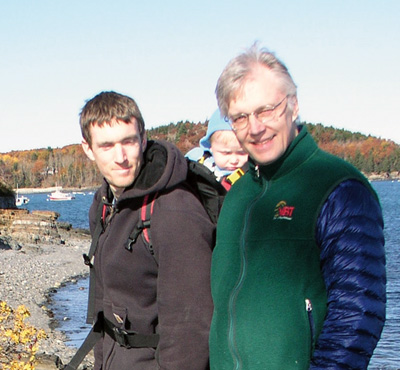For many, a national park feels like one of the last quiet places on Earth … until a snow-mobile roars by, or an airplane rumbles overhead. So how do you ensure peace and quiet?
Congress posed this question in 1987 after a deadly midair collision between two Grand Canyon sightseeing tours prompted the Federal Aviation Administration and U.S. National Park Service to work together to improve aviation safety and restore natural quiet in parks.
In 1988, new regulations established fixed routes, altitude restrictions, and flight-free zones for sightseeing air tours, and the Park Service was ordered to study how the rules “succeeded in substantially restoring the natural quiet in the park.” But to determine how much man-made noise is appropriate in a park, they first had to figure out how to measure natural quiet.

“It is really hard to find anyplace in this country to sit for an hour and hear nothing but natural sounds,” says mechanical engineer Nick Miller ’66.
In the early 1990s, the Park Service turned to Miller and his colleagues at the noise-consulting firm he co-founded, Harris Miller Miller & Hanson Inc., beginning an adventure that took Miller to the Grand Canyon, down the Colorado River, and on an 11-hour hike across lava flows in Hawaii Volcanoes National Park. The challenge: to study the relationship between sound and people’s reactions, and figure out how to collect data about man-made noise amid wind, water, and animal sounds.
“Measuring noise in a park is especially complex because it changes hour to hour, day to day, and even just a whisper or a rustle of foliage could be detected by recording microphones and affect measurements,” says Miller.
In the Grand Canyon, for example, Miller’s team conducted extensive monitoring and documentation of natural sound to develop acoustic profiles of park areas. That information allowed the researchers to study the impact of human-produced sounds, such as aircraft, by measuring decibels and the length of time the sounds are audible, and by interviewing park visitors. The method is still in use today for soundscape monitoring conducted by the Park Service, which established a program in 2000 to manage acoustic environments and protect sound as a natural resource.
Miller entered the environmental acoustics field as it emerged in response to the Noise Control Act of 1972, a watershed congressional passage that initiated federal regulation of noise pollution.
“That was a real formative experience, to be involved in a field when no one knew exactly how to quantify noise,” says Miller, whose work on preventing or reducing the incompatibilities between noise and land use has since spanned highway projects, airports and military facilities, and even auto racing.
Miller’s work with the Park Service, however, remains a high point of his career. “We found out how to make noise levels objective rather than subjective, and provide a basis for parks to decide what really is peace and quiet.”




